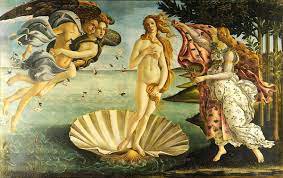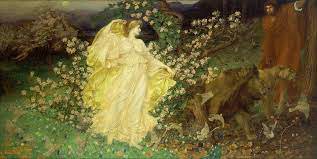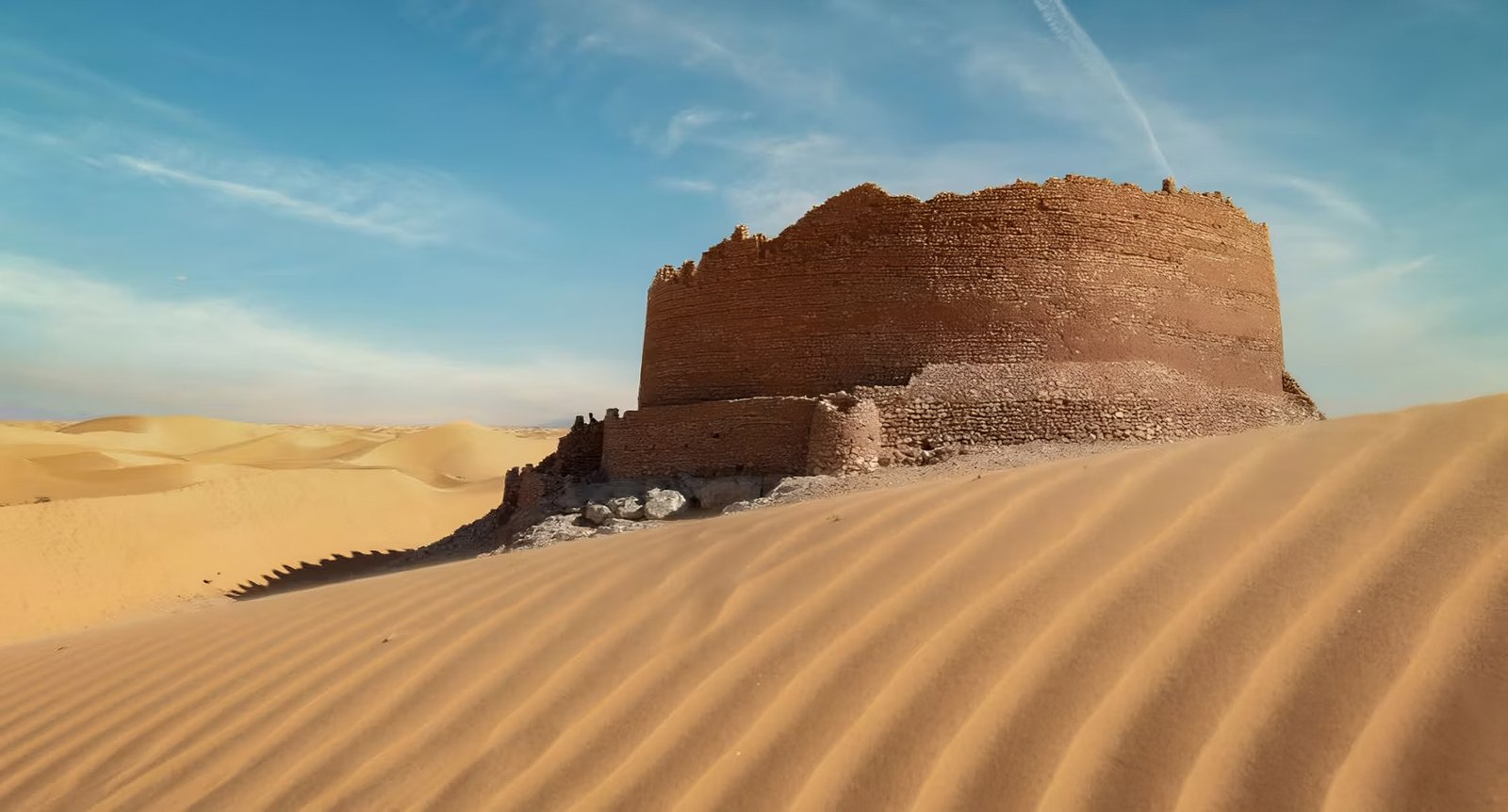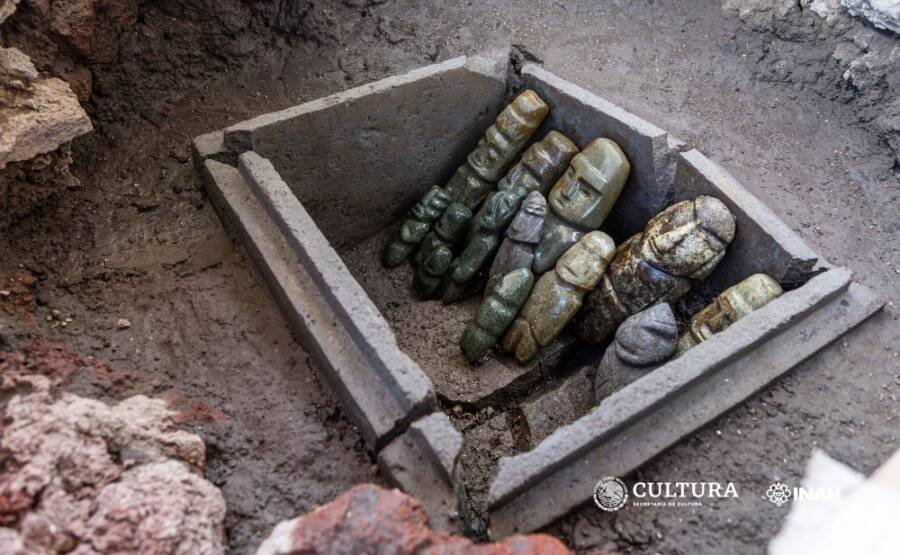Introduction
The mythical origins of Aphrodite
As the most beautiful of Greek gods, Apollo arises from the depths of mythology. Nevertheless, the story of her origination is a rather interesting tale of violence, transformation, and nature’s undying strength.
Aphrodite in Greek mythology
Aphrodite’s beauty is as captivating as her presence in Greek mythology. She is not only a goddess of love and beauty but also a powerful force of nature who can bewitch and entangle even gods and human beings. She affects fertility, passion, and human relationships and thus is among the most respected and feared of the Greek pantheon.
Her wonderful birth story
Birth saga of Aphrodite is not only about her birth but reminder of the transformative power of nature, the result of divine intervention and the cyclical nature of creation and obliteration which is central to Greek mythology.

The Castration of Uranus – The Birth of Aphrodite
Prelude to Aphrodite’s creation
The story of Aphrodite’s birth begins with a clash between two powerful titans: Uranus, the original sky god, and Gaia, the earth goddess. Gaia conspired that her child Uranus would be overthrown because he ruled tyrannically over her other child Titans, his children.
The castration by Cronos
In response, Gaia, the mother of Uranus, plots revenge with Cronus, the youngest of the Titans. Cronus receives a sickle from his mother, who tells him to castrate his father.
Uranus is ambushed and his genitals severed by Cronus, which he throws into the sea. Their severed organs falling in the churning waters of the sea lead to extraordinary occurrences culminating to the birth of Aphrodite.
The development of important aspects from the sea
From the sea foam created by the castrated genitals of Uranus, three powerful entities spring forth: Aphrodite, the goddess of love and beauty; the Erinyes, the vengeful Furies; and the Giants, monstrous creatures with super strength.
Aphrodite’s emergence from the sea foam is symbolical of her association with nature and her incarnation of beauty that comes from the primeval forces of the earth and sea. Her name Aphrodite literally means foam born emphasizing her unique birth connection to the watery realm.

Sea Foam and The Birth of Aphrodite
The mystifying metamorphosis of the sea foam into a goddess
As the severed genitals of Uranus start sinking into the deep sea, a magical transformation starts unfolding. The foam of the sea, charged with the divine essence of Uranus, swirls and bubbles taking on a hypnotic glow.
This radiant foam’s heart from whence Aphrodite, unrivalled in grace and beauty, sprung from. Her skin is as pure as the sea foam which she emerged from, her eyes sparkle like the radiant ocean, and her hair falls over her back like waves kissing the shore.
The birth of the goddess is evidence of the power of nature, and how the sea can transform into a beautiful lady. The birth of Aphrodite through sea foam not only makes her a goddess of love and beauty, but also connects her to nature.
A floating-born Aphrodite, radiant and air-like
There is a cool breeze and warm rays of the sun greeting Aphrodite as she rises from waves. The sea nymphs are so impressed by her beauty that they embrace her and drape her with a translucent dress woven from sea silk threads.
With each step she makes, the charm and heat of Aphrodite radiates. Spring follows her with flowers, birds sing sweeter, the air filled with sweet smell that stimulate the senses.
Aphrodite symbolized a birth of beauty from chaos in emerging from the sea foam. Her heavenly beauty comes from the troubled depths of the ocean, expressing the contradictory nature of nature as a source of creation and destructions, of adoration and fear.
Aphrodite’s Arrival on Cyprus – The Birth of Aphrodite
The merciful coming down of the goddess on Cyprus island
Soft Zephyrian god’s breezes carry ahead Aphrodite in search of who she is. Her last destination is a peaceful Island of Cyprus that is acclaimed for its natural beauty.
When the goddess Aphrodite gets near the shores of Cyprus, the island becomes a paradise. Flowers in different colors adorn the land, the trees are laden with ripe fruits while bird songs permeate the air.
Love descends upon the island as it watches the goddess Aphrodite gently drop to its ground. Enchanted by her beauty and elegance, the islander’s hail her as the goddess, protector and inspirer.
Finally, some ancient tales that describe the emergence of Aphrodite.
The many Greek stories describe how Aphrodite descended from Cyprus which later dominated the whole island.
In one of the versions, Aphrodite emerges from a large seashell with her radian beauty that could blind all humans she faced. She is seen in the other playing on the dolphin while she laughs and her laughter travels through the waves.
However it is the coming of Aphrodite on Cyprus that remains one of the fundamental turning points in Greek mythology. This marks the start of her rule on the island and it was a time of beauty, love and abundance.
Cyprus as the sacred place of Aphrodite (the symbolism)
It is perfect that the goddess of love, beauty and fertility dwells in Cyprus- a green country with rich valleys, and beautiful sea-coast. As the Cypriots adored Aphrodite and worshiped her as their guardian and source of inspiration, the island’s inherent beauty also represents the goddess herself.
It was transformed into a place where Cyprus became Aphrodite. There were temples and shrines constructed in honour of Aphrodite. The goddess’s essence got interlaced with the natural beauty of this island, and Cyprus people kept celebrating it many years afterwards.
Hesiod’s Account in “Theogony“
The account about the birth of Aphrodite as told by Hesiod’s poem
The birth of Aphrodite in Hesiod’s epic called “Theogony” is described impressively and engagingly by lines of poems. In describing the birth of the goddess, Heriot presents breathtaking imagery with emphasis on her attractiveness, feminine allure, and overwhelming divinity.
In their turn, Hesiod’s account commences from a violent act committed by Uranois. Hesiod writes about how the sea foam chuming into airy white smoke that becomes the ethereal shape for Aphrodis.
Hesiod describes in great detail Aphrodite’s shiny surface, without a single flaw on it, bright eyes, and beautiful flowing, yellow hair. He stresses at her divinity and attractiveness towards everybody who sees her.
The mythological nature of Hesiod’s poem demonstrates how timeless and appropriate it can be in describing the deities. His poems are responsible for defining, over the years, Aphrodite – one of the greatest deities in Ancient Greece.
Aphrodite’s depiction in Theogony as a crucial character – The Birth of Aphrodite
The “Theogony” of Hesiod does not portray Aphrodite merely as a deity who personifies physical beauty and love; she is at the heart of the divine realm, an epitome of change, life-giving, and a living embodiment of nature
Hesiod chronicles that at this crucial point in Greek mythology is when Aphrodite makes an entry into Greek history and ushers in the era under the supervision of the Olympians. This is demonstrated by her coming out of sea foam which denotes that a new age has come to birth, an epoch marked with love, beauty, and unity in nature’s order.
Hesiod’s presentation of Aphrodite as a central character clearly illustrates the importance of this goddess in the ancient Greek society. She is more than a god of the romance and the appetite; she is the force of nature which initiate the changes and symbolizes eternal magnificence of the beautiful out of chaos.
Conclusion – The Birth of Aphrodite
Tales of how Aphrodite is born form the sea foam, illustrate the quintessence of Greek mythology as full of violence, change and the lasting force of nature. The emergence of Aphrodite depicts nature’s transcending powers and how she creates goodness out of confusion. Moreover, her voyage to Cyprus and her leadership over the goddess of love, beauty, and fertility add weight to her importance in Greek culture.
The story of Aphrodite reminds us of how the heavenly sphere is connected with nature and the world around it. The fact that she emerges from the sea foam symbolizes how closely humans are interconnected with their natural environment and reiterates the necessity for respect towards nature’s equilibrium.
FAQs – The Birth of Aphrodite
What does Aphrodite’s birth represent?
The fact that Aphrodite emerged out of the froth represents the element as something powerful and fertile which has the capacity to produce beauty amid chaos. She is the first goddess of this new age of love, romance, and the eternal power of nature.
What are the symbolic meanings associated with Aphrodite?
Aphrodite is associated with a multitude of symbolic meanings, including:
• Love and Desire: Desire: Aphrodite embodies the power of love, passion, and desire, representing the emotional bonds that connect mortals and gods alike.
• Beauty and Grace: Physical perfection is symbolized by Aphrodite as well as a grace that can’t be paralleled with anything else and simple beauty.
• Fertility and Nature: Associated with this is Aphrodite who stands for sexual abundance and a thriving nature which promises everlasting life and health on our world.
• Sea and Seafaring: Her birth in sea foam linked with sea realm so she took care of seafarers and guided them.
• Pleasure and Enjoyment: In general, Aphrodite is the urge to enjoyment and extravagance that stimulates people to enjoy the world’s joys.
What is their justification for modern perceptions of Aphrodite, based on Greek philosophies?
Aphrodit’s importance should not be limited to describing her as the goddess of love, beauty or any other name that describes her essence. She is an important central character because she symbolizes reorganization in the Universe. Her influence transcends art, literature, religion, all of life in general.
What is the significance of Aphrodite’s arrival on Cyprus?
The arrival of Aphrodite at Cyprus is one of the famous events in the Greek mythology. She establishes power in the island and it will be when there will be abundance, grace and love. Holy land becomes cypress, a shelter that is sacred and manifest of God’s power.
What is the aspect under which Hesiod describes Aphrodite in “Theogony”?
The manner in which Hesiod describes Aphrodite’s birth in his epic poem “Theogony” uses much of poetry and imagery. These gods concentrate on her beauty, grandeur, and divinity which make her the greatest amongst all gods. As a result, many have viewed him as the creator of Aphrodite, who is among the most adored and respected gods. In coming, Aphrodite symbolizes that which would be remembered by nature’s strength, love, and great majestic beauty among other godly attributes.







1 thought on “The Birth of Aphrodite in Greek Mythology: A Tale of Beauty and Sea Foam”
Thanks for sharing. I read many of your blog posts, cool, your blog is very good.